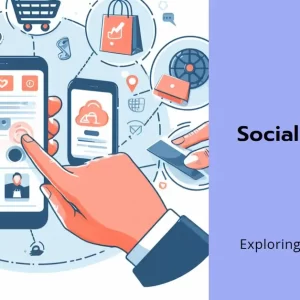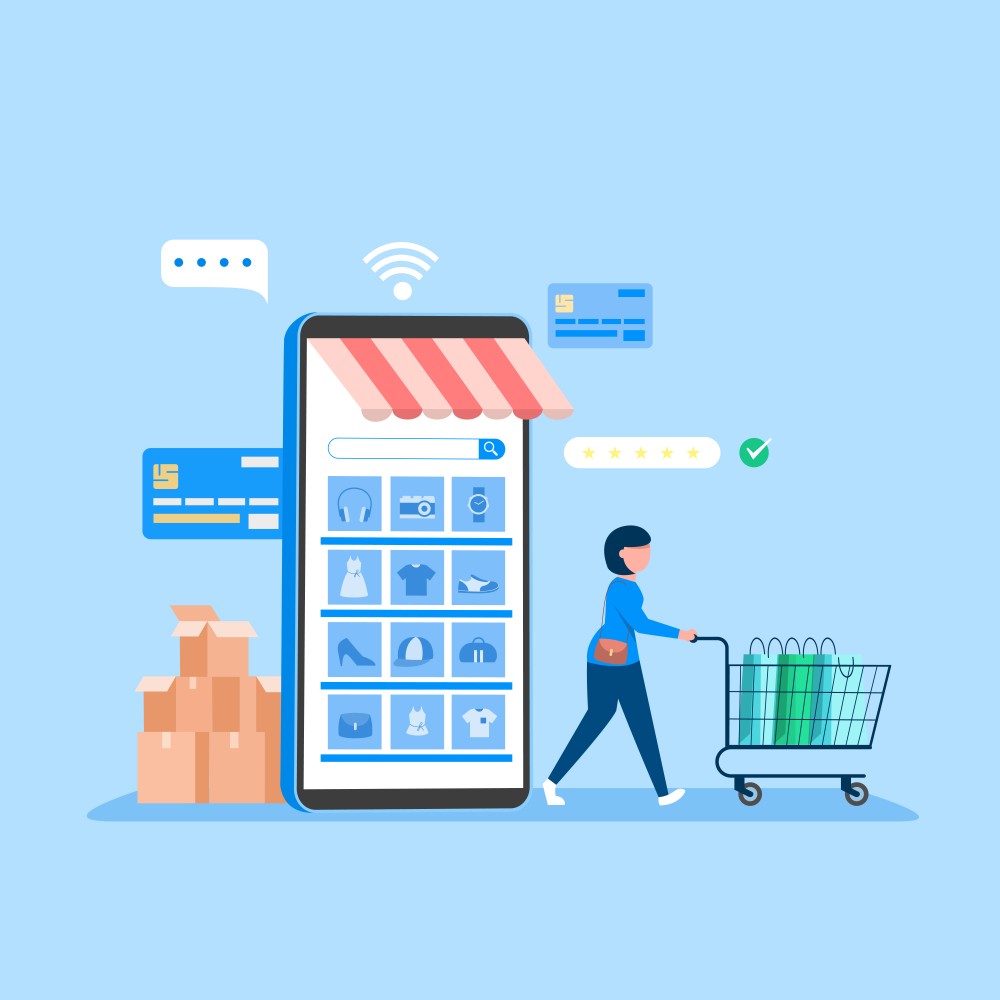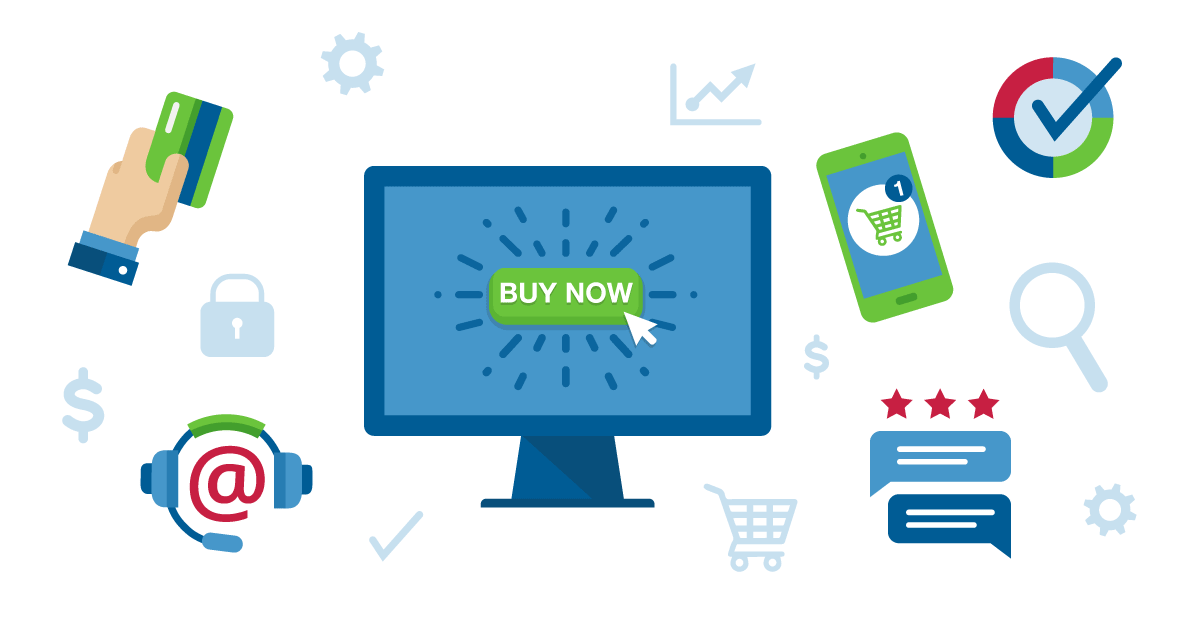M-commerce is transforming the way people shop online, altering consumer behaviour, and completely reshaping eCommerce. Portable companions, such as phones and tablets, have replaced malls as flawless shopping points today. The mobile commerce phenomenon and its implications for eCommerce businesses concerning some convincing statistics supplied by reliable authorities.
According to Statista, a staggering two-thirds of all eCommerce sales across the world occurred through mobile commerce, and the figure should only increase. Mobile shopping provides convenience for customers as they can buy at any time or any place.
What is mobile commerce?
This kind of trading is termed as “m-commerce” and it can involve performing monetary transactions through utilizing tablets or phones.
This is a revolution in e-commerce, where people can buy and sell goods and services nearly everywhere using a smartphone and tablets.
Nevertheless, mobile commerce is more than the simple evolution of online shopping. Additionally, it has stimulated the growth of some enterprises and services and assisted those that already existed, such as:
- Money transfers via mobile devices.
- Electronic tickets and boarding passes.
- Obtaining and delivering a digital good.
- Banking on the go.
- There are both app-based as well as contactless payment options available.
- Services that are location-based.
- loyalty card, discounts, and mobile advertising.
Advantages of Mobile Shopping
Mobile application development London and the transition to a mobile-enabled platform used to be affordable for big companies like Amazon and Walmart but not for small businesses. Nonetheless, as costs of enterprise mobilization reduce, more of such advantages get used by more companies.
- Design and Optimisation with a Focus on Mobile
E-commerce companies must give mobile-first design and optimization top priority since mobile commerce is growing. According to Google, if a website takes longer than three seconds to load, 53% of consumers will leave. Therefore, optimizing conversions and reducing bounce rates require fast loading times and an intuitive user experience.
- Using Mobile Applications
According to the Smartphone Commerce Report, smartphone apps make up 66% of all mobile transactions, which means they have a substantial impact on eCommerce sales. By providing customized experiences and special bargains, a mobile shopping app may increase user engagement and loyalty.
- Simplifying the Procedure for Checkout
The Baymard Institute’s studies reveal that in the meanest, 85.65% of users abandon carts via mobile devices. It can boost conversion rates through the simplification of a checkout procedure, the introduction of single-click payments, as well as mobile-friendly payment solutions such as digital wallets.
- Customisation and Mobile Promotion
Today, mobile business success is all about personalization. Infosys reports that 74% of users get annoyed with impersonal material in the online environment. By targeting customers with personalized recommendations based on their preferences, as well as conducting focused mobile marketing campaigns, eCommerce companies can boost customer engagement and retention.
- Mobile payments and security
The adoption of mobile payments has greatly expanded over the years and dramatically altered how consumers purchase goods and services. Mobile banking applications and digital wallets have become popular modes through which consumers can securely transact on their phones. Aspects like the increased adoption rate of smartphones, contactless payment convenience, and advancements made to secure payment protocols have greatly influenced this move toward mobile payments.
- Expansion of mobile payment methods
Due to their versatility and simplicity of use, digital wallets like Apple Pay, Google Pay, and Samsung Pay have become more and more popular among smartphone users. By tapping their phones at appropriate payment terminals, users of these wallets may securely save their payment information via their phones and make transactions. Furthermore, mobile banking apps from established financial institutions now support mobile payments, enabling users to connect their accounts and conduct transactions straight from their cell phones.
- Use chatbots on mobile devices.
Insider Intelligence estimates that the amount spent globally on consumer retail chatbots in 2019 was $2.8 billion, but by 2024, that amount is projected to increase to $142 billion. Online merchants are increasingly using chatbots and virtual assistants to help answer queries and give support at the client’s beck and call as customers want 24/7 customer care. Chatbots will not only handle client conversations, but they will also free up your time as a merchant to concentrate on other facets of your company.
- QR code
When you scan one of these recognizable square images, a landing page for that brand will appear. These are particularly helpful for promotions and are quick and effective for both you and your clients. You can use QR codes in almost any place, and they’ll help you increase sales rapidly. Businesses must develop mobile-friendly websites and applications in order to reach their target audience and provide them with exceptional mobile experiences as mobile commerce grows in popularity.
- Save Features or Add to Wishlist
Provide a “Save” option for your shopping cart so you may continue shopping. Items can be saved by customers for future purchases. Think about delivering personalized notifications or stored shoppers’ emails. Reminders on mobile devices for incomplete purchases might be beneficial as well. Using wishlist or save functions makes it easier to keep track of and manage wanted items.
- Include reviews and ratings Features
Customer journeys and eCommerce UX are enhanced by ratings, reviews, and best-seller markings. These features enable consumers to base their purchasing decisions on the thoughts and experiences of others. Ratings and reviews from customers help with product evaluation, social evidence, and trust-building. Adding rating and review capabilities to your app enhances both its legitimacy and users’ buying experience.
- Enhance the loading speed.
Users will leave your website or application if it takes more than a few seconds to load. Among other things, optimizing your graphics, streamlining your website layout, minifying your resources, and reducing redirects will all help your load speed. Another method for choosing resources carefully and only when needed is lazy loading.
Conclusion
To sum up, mobile commerce has shown to be an essential component in carrying out an Omni channel strategy. Customers are using mobile platforms more and more to research, purchase, and communicate with businesses as a result of the widespread usage of smartphones and other mobile devices. Companies may take advantage of this growing market by including mobile commerce into an Omni channel strategy and providing smooth experiences across several touchpoints. By embracing mobile commerce, businesses can communicate with their customers from any location, at any time, and on any device.





